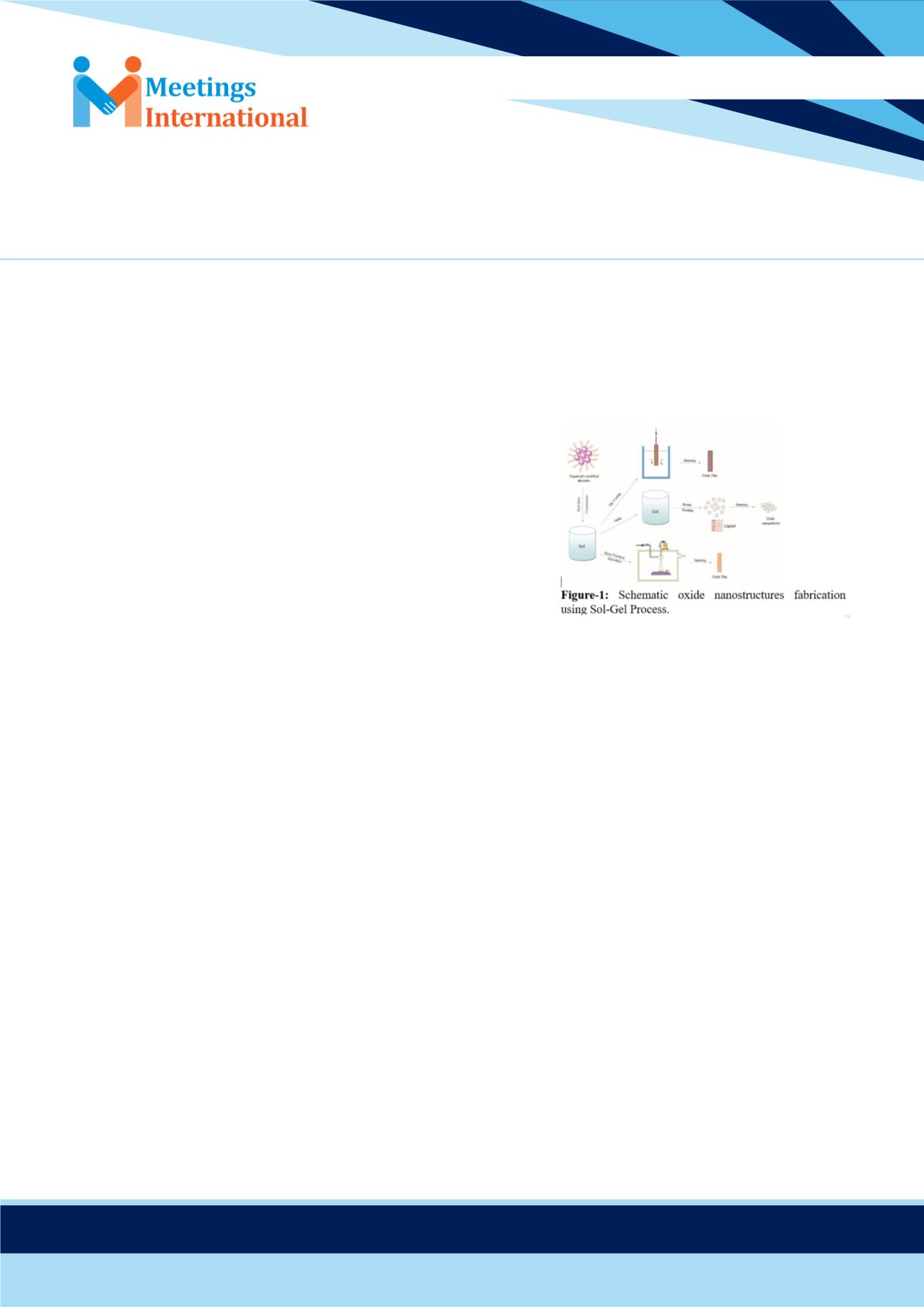

Volume 3, Issue 4 (Suppl)
Nano Res Appl
ISSN: 2471-9838
November 07-08, 2017 Singapore
International Meeting on
Advanced Nanomaterials and Nanotechnology
Nanomaterials Meetings 2017
November 07-08, 2017
Page 39
Nano-fabrication of metal/heterometal oxides nanostructures using sol-gel process
Ajay Saini, Veena Dhayal and Dinesh C Agarwal
Manipal University, India
M
etal/heterometal oxides nanostructures play an important role in materials science applications. Several applications such as
photo- catalysis, in waste water treatment, lithium ion batteries, microelectronic circuits, solar cells, as sensors, as piezoelectric
devices have been reported in literature. Earlier approach to synthesis was
through solid state chemistry route, but in the recent years alternate approach
using solution techniques have emerged, including co- precipitation, sol-gel
process, hydrothermal processing, and solvothermal methods for fabrication
of oxides nanostructures. Among these, sol-gel is a versatile method for
the growth of nanostructures, such as nanorods, nanowires, nanobelts and
hierarchical nanostructures, due to its simplicity, easy handling process and
capability to control over grain size. Metal alkoxides are commonly used
precursors for the synthesis of oxides nanostructures. The modification
in metal alkoxides i.e. substitution of alkoxo group by chelating ligands
such as oximes, β-ketones, Schiff ’s base, glycerols, etc. changes electronic
environment of the precursor, which affects the kinetics of hydrolysis as well
as condensation reactions, leads to altered morphology and functionality of oxides nanostructures. The introduction of modifiers
not only generates steric effects, but also increase the gelation time and maintained the viscosity of the sol. The present authors have
experimented to modify the precursors of aluminum and titanium alkoxides and also studied the effect of precursor chemistry on the
morphology and size of the nanostructured metal/heterometal oxides by sol-gel technique. The paper presents the approach to modify
the precursors of aluminum and titanium alkoxides, leading to modified nanoparticles with altered morphology. The nanostructures
so obtained were found to possess better anti- scratch and anti-corrosive properties, making them an attractive possibility for surface
protective coatings.
Recent Publications
1. Saini A, Jat S K, Shekhawat D S, Kumar A, Dhayal V and Agarwal D C (2017) Oxime-modified aluminium (III) alkoxides:
Potential precursors for γ-alumina nano-powders and optically transparent alumina film. Materials Research Bulletin; 93: 373-
380.
2. Atal M K, Saini A, Jat S K, Rathore K S, Dhayal V (2017) Synthesis and characterization of oxime-modified phynylimido vanadium
(V) isopropoxide and their hydrolytic study. Journal of Sol-Gel Science and Technology; 83: 281-290.
Biography
Ajay Saini is pursuing his PhD in nano-fabrication of oxides nanostructures and their application. He is a qualified professional, engaged in hands-on R&D
work in industry as well as in the academic research projects. He has expertise in the synthesis, design and characterization of materials (organic moieties and
nanomaterials) using various spectroscopic techniques. He has published 4 research papers in international journals of high repute and presented 5 research
papers in national and international conferences.
ajaysingodiya@gmail.comAjay Saini et al., Nano Res Appl 2017, 3:4
DOI: 10.21767/2471-9838-C1-005
















